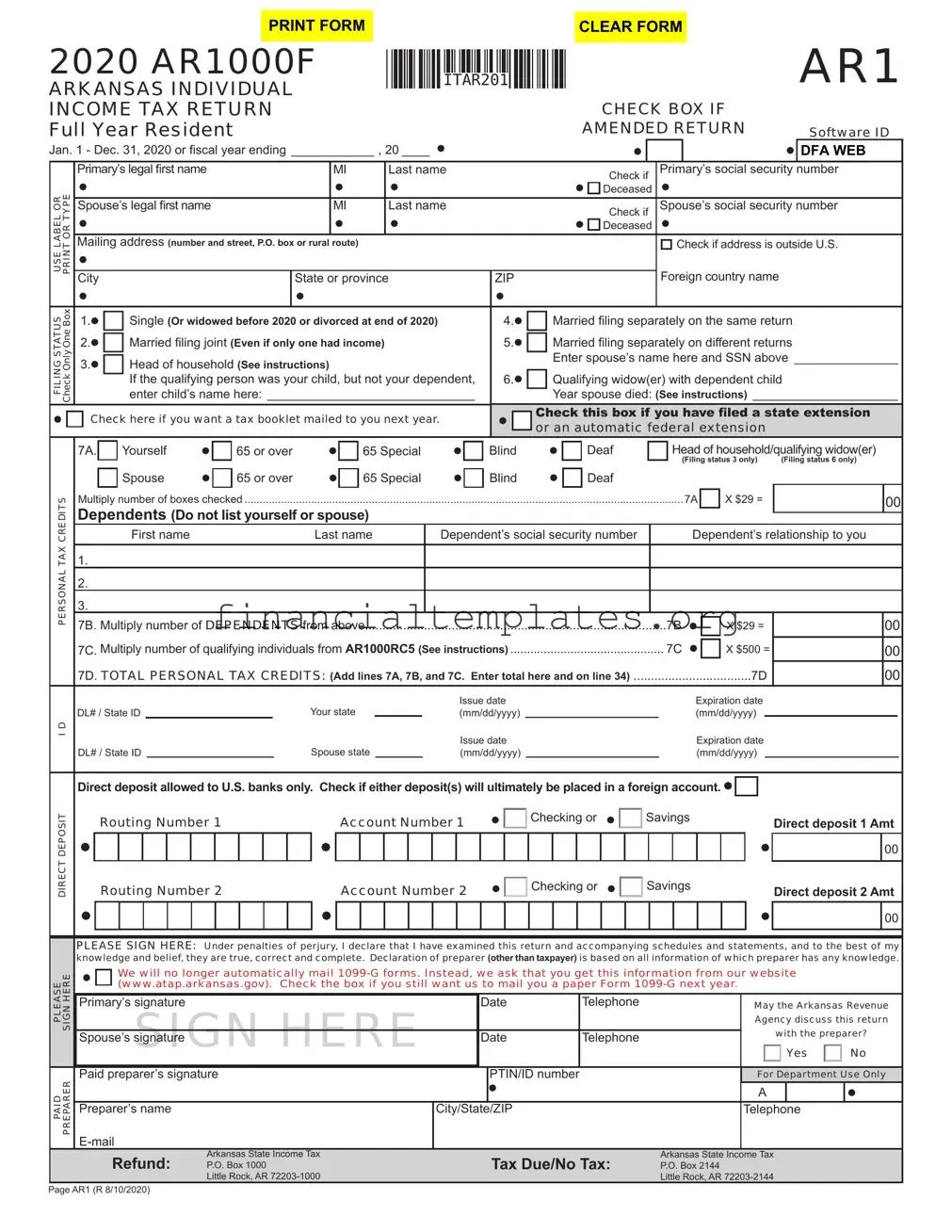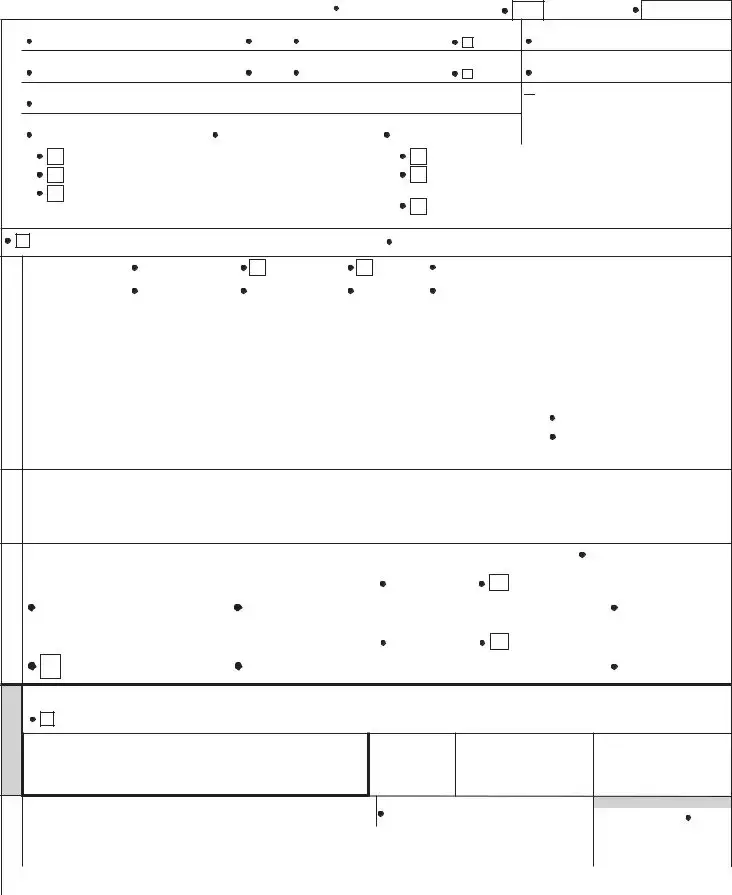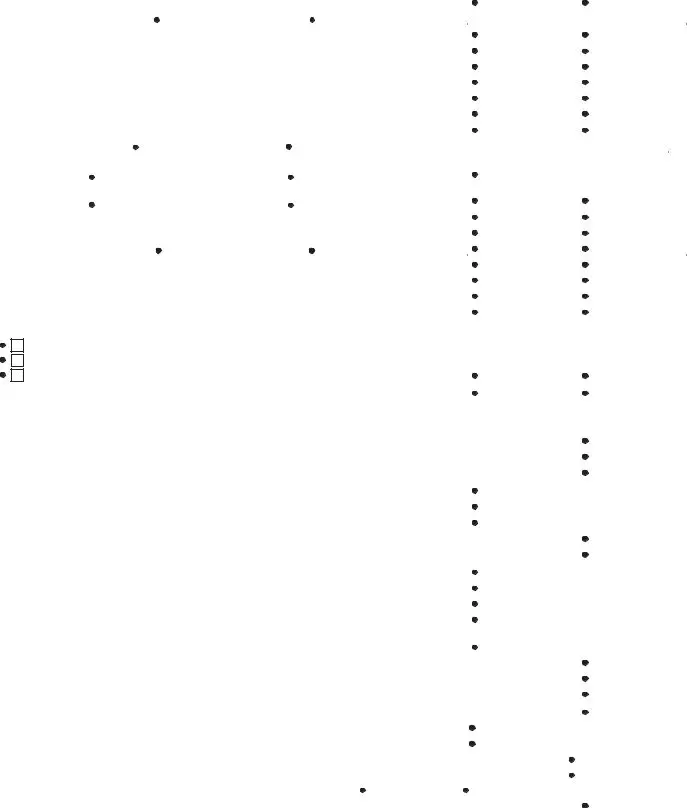The Form 1040, or U.S. Individual Income Tax Return, closely aligns with the AR1000F form in purpose and structure. Both forms are designed for individuals to report their annual income, calculate tax liability, and determine if a refund or additional payment is due. They also gather taxpayer information, dependents, income from various sources, and allow for deductions and credits to calculate the final tax liability. Each has specific sections dedicated to income adjustments, tax computation, and credits applicable to the fiscal year.
The Schedule C (Profit or Loss from Business) mirrors elements of the AR1000F form, particularly in sections where business or professional income is reported. Just like the AR1000F requests attachment of a federal Schedule C for business or professional income, the purpose of Schedule C is to report the income and expenses of the business operated by the filer. This ensures accurate calculation of taxable business income after adjustments, mirroring the objective of income reporting sections in the AR1000F form.
The 1099-R form, used for reporting distributions from pensions, annuities, retirement or profit-sharing plans, and IRAs, shares similarities with portions of the AR1000F that inquire about retirement income. Both documents are crucial for determining the tax implications of such distributions. The AR1000F specifically asks for attachment of all 1099-R forms when reporting primary and spouse’s pension plans or qualified IRA distributions, indicating their interconnectedness in accurately reporting and taxing retirement income.
Form W-2, the Wage and Tax Statement, and the AR1000F share the need for wage earners to report their income accurately. The AR1000F requires taxpayers to attach their W-2 forms as evidence of wages, salaries, tips, etc., reflecting how both forms are instrumental in calculating tax based on earned income. Detailed in each W-2 are key figures necessary for completing portions of the AR1000F, such as total wages earned and federal income tax withheld, foundational in determining state tax liability.
The Schedule E (Supplemental Income and Loss) bears resemblance to parts of the AR1000F form that deal with income from rents, royalties, partnerships, estates, and trusts. For those who need to report such income on the AR1000F, the federal Schedule E may provide the necessary detail and documentation. This reflects the broader concept of accurately reporting various income types for tax purposes, a principle that underlies both the AR1000F and Schedule E.
Form 2441, Child and Dependent Care Expenses, is related to the child care credit section on the AR1000F. Taxpayers can claim a percentage of the federal credit for child and dependent care expenses on the AR1000F, similar to how Form 2441 calculates the federal tax credit based on those same expenses. This demonstrates an interplay between federal and state tax filings where state credits may hinge on federal determinations.
The AR1000EC form (Early Childhood Program) pertains to specific state-level credits similar to the child care credit on the AR1000F. The requirement to attach Form AR1000EC for claiming the credit reflects targeted tax incentives much like those for general child care. It illustrates how various credits, each with its dedicated form and criteria, collectively reduce tax liability on the AR1000F.
Form AR4, related to interest and dividend income, parallels sections of the AR1000F where taxpayers must report such earnings. The necessity to attach Form AR4 for amounts over a threshold mirrors the way the tax system categorizes and scrutinizes different income types. This ensures thorough documentation and fair taxation of all income sources, aligning with the principles of comprehensive income reporting.
The Form AR-OI (Other Income/Depreciation Differences) is akin to the portion of the AR1000F that captures other income types not specified elsewhere. This attachment requirement highlights the need for a detailed account of varied income sources that may carry different tax implications. It underscores the comprehensive nature of income tax returns in capturing the full financial picture of the taxpayer.
Lastly, the Form AR2210 (Underpayment of Estimated Tax by Individuals) shares its rationale with parts of the AR1000F concerning underpayment penalties. Just as the AR2210 calculates penalties for underpayment of estimated tax, the AR1000F includes sections related to additional tax liabilities, such as penalties or specific tax adjustments. This reflects the broader requirement for timely and accurate tax payments and the potential consequences of failing to meet these obligations.



 Check if address is outside U.S.
Check if address is outside U.S.